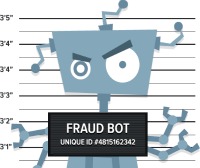Recent studies have shown that computers being remotely operated by hackers account for 11% of the views of online text ads. For digital video ads, the number more than doubles to 23 percent.
Companies paying for web advertising end up getting far less bang for their buck. The fraudulent activity on the ads is estimated to cost advertisers $6.3 billion in 2015, according to a study by White Ops and the Association of National Advertisers. ANA President and CEO Bob Liodice stated that, “Fraud is everywhere.”
The study was conducted in August and September 2014 and measured 5.5 billion impressions in 3 million domains. For the study, researchers placed software on the ads of 36 members of the association that would tell them if the ads were viewed by a human or a bot.
How does the fraudulent activity occur? Hackers operate programs that seize control of computers, many of them privately owned, and string them together into “botnets.” Once the hackers have control of a large group of computers, they command them to surf the Internet, watching videos and clicking on ads. This activity most commonly takes place between the hours of midnight and 7 a.m., when the computers’ owners are asleep.
The botnets can skew the statistics of many ad campaigns, producing false positives regarding the number of clicks an advertisement is receiving. A bot can disguise itself as any individual; a stay-at-home mom, an outdoors enthusiast, a prospective orthodontic patient, etc.
Bot fraud is now added to the list of perils for online marketers. Before starting a digital advertising campaign, ask yourself if it is worth the risk. Remember that any traffic to your website via paid ads does not count towards your site’s history or click-through rate. Paid traffic might help you schedule a few more orthodontic exams, but it will not help your website rank higher in the long run.
Furthermore, prospective patients who find you through paid advertisements often turn out to be “C” patients. These may not be the type of patients you are interested in treating in your practice.
The ANA study also found that roughly half of third-party sourced traffic is fraudulent, meaning that practices and companies who are paying for clicks may in fact be paying for just that — clicks — and nothing more. Suffice it to say that your hard-earned marketing dollars could be better spent elsewhere. Buyer beware!
Photo credit to http://nativemobile.com.